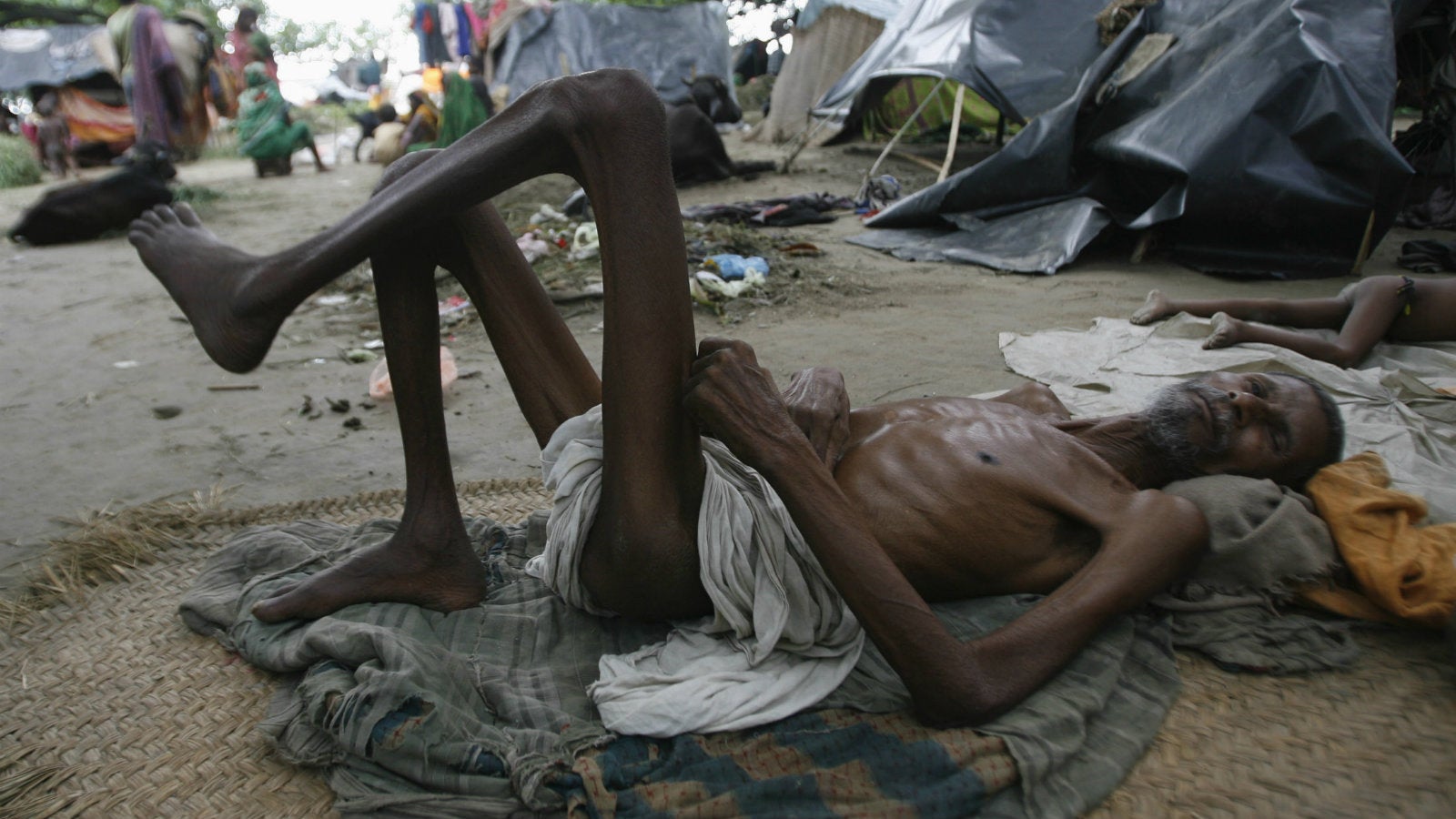With 15% of its population undernourished, India still has a serious hunger problem
Despite an improvement in nutrition levels over the last 15 years, India still has a serious hunger problem: 15% of the country’s population remains undernourished.


Despite an improvement in nutrition levels over the last 15 years, India still has a serious hunger problem: 15% of the country’s population remains undernourished.
Asia’s third-largest economy has taken a lowly 97th spot in a ranking of 118 countries in the 2016 Global Hunger Index (GHI) released by the International Food Policy Research Institute (IFPRI). This means even countries such as Bangladesh, Iran, Iraq, and Nigeria are doing better than India in feeding their respective populations.
The index, calculated annually, is based on four indicators: undernourishment across the population of a country, mortality among children below five years of age, child wasting (children under five who have low weight for their height), and child stunting (children under five who have low height for their weight).
This year, India ranks below most other Asian nations. But the 2016 results are not comparable to previous years because of a change in calculation methodology, IFPRI said.
Since 2000, India’s GHI score has steadily improved. But at 28.5 points this year, it still reflects “serious hunger levels.” Also, India’s score this year is worse than the average among developing nations at 21.3 points.
A GHI score of between 20 and 34.9 points reflects serious hunger levels, between 35 and 49.9 indicates alarming hunger levels, and over 50 is considered extremely alarming.
India’s hunger problem remains serious despite the fact that undernourishment level and child mortality rate in the country have declined significantly since 1991, as per IFPRI’s data.
Over 15% of Indian children aged below five suffer child wasting, also known as acute malnutrition. On the other hand, stunting, which prevents children from growing properly, is more common. Between 2011 and 2015, almost 40% of Indian children aged below five suffered stunting.
“India was rated as ‘alarming’ in 2013 and has experienced an improvement in its GHI score over recent years. Since 2000, the country has reduced its GHI score by a quarter,” IFPRI said in a statement.
“India is making tremendous progress, but we have significant challenges ahead,” said PK Joshi, IFPRI’s director for South Asia.